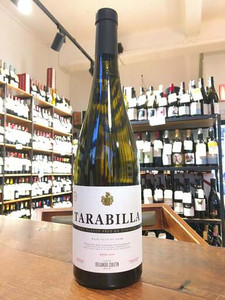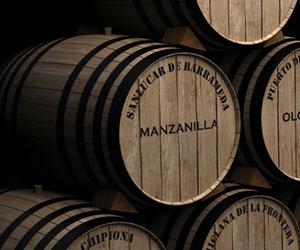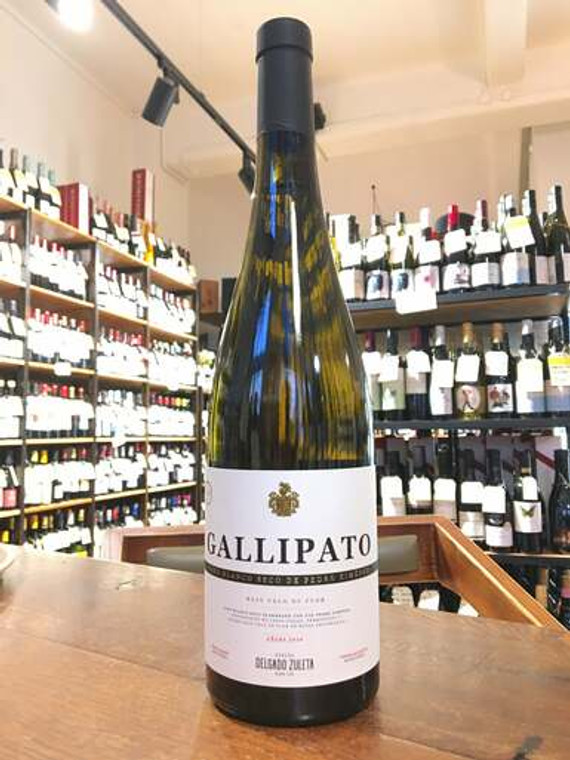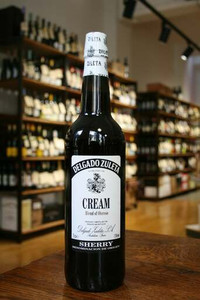
A stunning new wine from Delgado Zuleta, one of the oldest wineries in Sanlucar de Barrameda. This is part of a project exploring what can be achieved in this region with varieties other than Palomino.
Aged under flor for 6 months to preserve similarity with sherry wines and then bottled carefully to prevent oxidation. This is a dry, saline white with great body and an unctuous mouthfeel. Sweet, floral and honey notes add balance and complexity to this wonderful wine.
Delgado Zuleta
Pedro Ximénez
Pedro Ximénez is a white grape variety most commonly found in the Montilla-Moriles region in southern Spain. It is strongly associated with sweet wine from the Jerez region, though the grape itself is not widely planted there. It can be found elsewhere in Andalucía, as well as in Portugal, Australia and South America.
In the vineyards in Montilla-Moriles, Pedro Ximénez is highly susceptible to disease and is relatively low-yielding. The variety is thin-skinned, and the grapes are traditionally dried in the sun, causing them to dehydrate and concentrating their sugar levels. This is done to produce dark and sticky sweet wines. Pedro Ximénez makes up a large majority of the Montilla-Moriles vineyard, and much of the production is sold to producers of fortified wines in Jerez and Málaga. This is a perfectly legal practice, and producers can label the resulting wines according to their own geographical designation.
The most important grape variety in Jerez is Palomino Fino, which accounts for almost the entirety of the vineyards. Pedro Ximénez wines are imported from Montilla-Moriles to sweeten Palomino-based blends, sometimes alongside the Muscat of Alexandria grape.
Jerez producers may also bottle imported Pedro Ximénez wines as a single varietal Sherry, often labelled “PX”. Pedro Ximénez Sherry is the sweetest and darkest of all Jerez wines. High-quality examples of Pedro Ximénez Sherry are some of the finest dessert wines in the world, and aged examples from top producers can routinely fetch hundreds or thousands of dollars. PX Sherry can have as much as 500 grams per liter of residual sugar, capable of exceeding even the sweetest Tokaji Escenzia wines. They are deep brown in colour and highly aromatic, with notes of coffee, licorice and dried fruits.
Outside of Spain, Pedro Ximénez can also be found in the Alentejo region of Portugal, where it is known as Perrum. Further afield, a small amount is grown in Australia, where it is known simply as Pedro; and in Chile, where it is known as Pedro Jiménez.
Pedro Ximénez should not be confused with Pedro Giménez, a widely-planted white grape in Argentina. Pedro Giménez is significant in the production of everyday wine intended for the domestic market, and its largest plantings are in Mendoza.
Sanlucar de Barrameda
Sanlucar de Barrameda, a historic coastal town in Andalucia, is the home of refreshing, sea-scented Manzanilla Sherry. The town's humid, maritime air creates an ideal environment for the development of flor yeasts – the secret behind Manzanilla's distinctive taste and aroma.
The Manzanilla DO (Denominación de Origen), created in 1933, covers exactly the same geographical area as the Jerez DO and the Palomino Fino grapes that go into the base wine can be grown anywhere in the Jerez viticultural area. What separates the two is the all-important barrel maturation stage, which must take place in Sanlucar.

Located on the left bank of the Guadalquivir estuary, Sanlucar de Barrameda is the northernmost point of the famous "Sherry Triangle", which is completed by El Puerto de Santa Maria (24km/15 miles south, along the coast) and Jerez de la Frontera (24km/15 miles southeast and inland).
Sanlucar's particular location was critical in the development of the Manzanilla style of Sherry for two reasons. The first is the moist seaside air here, which both encourages prolific flor growth and imparts a gently saline note to the wines.
Proximity to the Atlantic means that both summer and winter are less harsh here than in Jerez de la Frontera, so the heat-sensitive flor can survive all year round. This both increases the yeasty, fresh-bread character of the wine and imparts distinctive notes of almonds and camomile ("manzanilla" in Spanish).
The flor also continuously protects the wine from oxygen, preventing it from developing into an oxidative Amontillado or Oloroso style. If the wine is left to age for so long that the flor does eventually die, the resulting wine is known as "Manzanilla Olorosa" and then a "Manzanilla Pasada".
The second reason relates to Sanlucar's strategic value as a port. Not only does the town sit at the very center of Spain's (relatively short) stretch of Atlantic coastline, it also happens to be just 72km (45 miles) downstream from Seville, Andalucia's ancient capital.
This made it an obvious base for Spain's explorers to set out on their voyages during the Age of Discovery (both Columbus and Magellan launched voyages from the town), and later as a key transatlantic trading post.
As transatlantic trading burgeoned, so Sanlucar became increasingly important. Vast quantities of wine were stored there, and over time the traders observed a subtly different style of wine emerging – the style we now know as Manzanilla.








